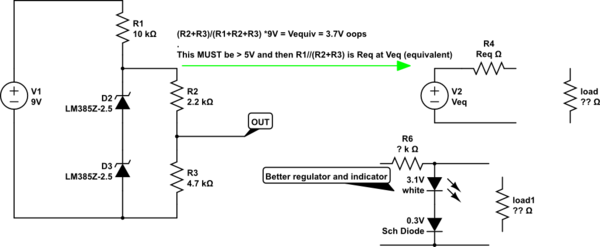I'm doing a simple circuit using LM385. In THEORY voltage measured on cathode of D2 should be 5V. And it is so, if R2 and R3 are not present in the circuit. So voltage divider from R2 and R3 across voltage of 5V should give OUT voltage of 3.4V.
However when I measure it, OUT is only 2.5V and voltage measured on cathode of D2 is only 3.7V!
Could someone explain me please what am I missing?

simulate this circuit – Schematic created using CircuitLab

